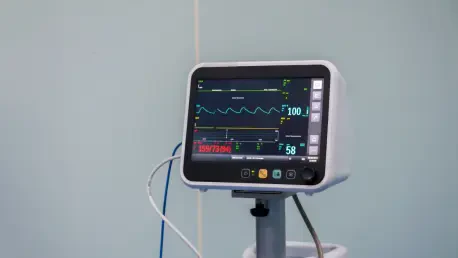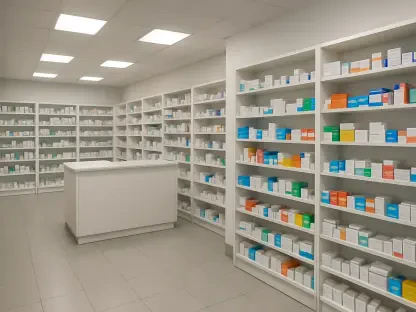The cardiovascular device market in the United States is marked by fast-paced developments, driven by significant epidemiological and technological factors that profoundly influence the healthcare industry. As cardiovascular diseases continue to be the leading health concern in the U.S., the demand for effective diagnosis and treatment options becomes increasingly crucial. The market is projected to reach USD 38.49 billion by 2034, demonstrating a strong compound annual growth rate of 5.6% during the forecast period starting from the current year. Understanding the dynamics that propel this growth sheds light on the evolving nature of cardiovascular technologies, the challenges faced by industry players, and the strategic directions companies are employing to navigate these complexities.
Driving Factors and Economic Projections
Rising Prevalence of Cardiovascular Diseases
The U.S. cardiovascular device market owes much of its momentum to the rising prevalence of cardiovascular diseases within the nation. Driven by factors such as an aging population and unhealthy lifestyle choices, the incidence of heart-related maladies like hypertension, heart failure, and coronary artery diseases is escalating. These conditions necessitate advanced diagnostic and treatment devices, which have become essential components in managing patient health outcomes efficiently. As the population ages, the demand for sophisticated cardiovascular interventions grows, thereby expanding the market and pushing for innovations in both preventive and therapeutic solutions.
The demographic shift towards an older population further amplifies the need for devices designed to combat cardiovascular conditions. Older adults are significantly more susceptible to heart diseases, creating a larger market for devices that aid in their management. Such demand spurs ongoing research and development, ultimately leading to new technological solutions that cater to both early diagnosis and ongoing treatment of cardiovascular concerns. This demographic trend serves as a catalyst for market growth, maintaining the momentum necessary for continued innovation and competitiveness within the industry.
Technological Innovations and Consumer Adoption
Technological advancements remain a critical force behind the expansion of the cardiovascular device market. Innovations in minimally invasive procedures and smart device technologies are transforming the landscape by improving patient outcomes and boosting device adoption rates. These breakthroughs include smart implants, artificial intelligence-integrated diagnostic tools, and wearable medical devices that facilitate continuous and accurate cardiac monitoring, promoting preventive healthcare practices.
Wearable technology, in particular, has seen a surge in popularity due to its ability to offer non-invasive, real-time monitoring of essential health metrics such as ECG readings and heart rates. By enabling consistent tracking, these devices empower healthcare providers and patients to engage in more informed decision-making and proactive interventions. Such technologies are reshaping medical standards, embracing a holistic approach toward heart health management that caters to both immediate and long-term needs. This evolution marks a pivotal shift in consumer behavior, where individuals increasingly prioritize health maintenance and early disease detection.
Key Challenges and Competitive Landscape
Regulatory and Cost Concerns
Despite the promising growth trajectory, the U.S. cardiovascular device market faces several impediments that threaten its progress and potential expansion. One significant challenge involves the stringent regulatory landscape that governs the approval and distribution of medical devices. The complexities associated with gaining regulatory approval often extend the product development timeline and limit quick market entry, impacting overall growth and innovation. Compliance with safety standards and the occurrence of product recalls further complicates the market’s progress by enforcing barriers that manufacturers must navigate diligently.
High device costs also pose considerable challenges, influencing both production and consumer purchase decisions. Although technology is advancing rapidly, the pricing models associated with high-tech devices sometimes place them beyond the reach of potential users, thereby limiting widespread adoption. Consequently, companies are focused on overcoming these financial hurdles by implementing strategies to reduce manufacturing costs and offer competitive pricing models. Moreover, collaborations with insurance providers to facilitate favorable reimbursement policies are instrumental in enhancing accessibility and encouraging broader device usage.
The Competitive Dynamics
The competitive landscape within the U.S. cardiovascular device market is robust and continually evolving, characterized by prominent players pursuing innovative strategies to solidify their market positions. Key industry leaders such as Abbott Laboratories, Braun Melsungen AG, Biotronik SE & Co. KG, Boston Scientific Corporation, and Medtronic Plc actively engage in research, development, and strategic partnerships with the goal of advancing their technological offerings and expanding their market footprint.
These companies are dedicated to staying ahead of emerging trends by leveraging their expertise and resources in addressing the industry’s challenges. Whether through mergers and acquisitions or collaborating with healthcare facilities, these entities seek to bolster their capabilities and offer innovative solutions in response to the growing demand for advanced cardiovascular care. As competition remains fierce, adaptability and innovation become imperative, fostering a space where new entrants and established names vie for influence and success.
Market Trends and External Influences
Demand for Minimally Invasive Procedures
An overarching trend within the cardiovascular device market centers on the demand for minimally invasive procedures. Healthcare providers and patients increasingly prefer less invasive options, influenced by the potential for reduced recovery times and lower risk profiles. This preference is shaping the adoption of technologically advanced devices that cater to these demands while ensuring effective patient outcomes.
The shift toward minimally invasive procedures reflects broader changes within consumer behavior and healthcare policies. As the focus sharpens on patient-centric solutions that prioritize comfort and efficacy, new business models are emerging to accommodate these expectations. This trend encourages companies to invest in research and development initiatives that align with market preferences, ultimately contributing to the transformation of cardiovascular care strategies and expanding competitive dynamics.
Geopolitical and Trade Impacts
External influences such as geopolitical tensions and international trade dynamics can significantly impact the cardiovascular device market. In particular, trade disruptions between major economic players like the U.S. and China can affect material procurement and operational costs, presenting challenges that complicate market stability. In response, companies are adapting by diversifying supplier networks and enhancing regional production capabilities, mitigating risk, and fostering innovation amidst uncertainty.
These efforts to navigate geopolitical and trade pressures yield new competitive advantages, ensuring uninterrupted access to necessary materials and streamlining operations. By proactively addressing these issues, industry players are better poised to sustain growth and capitalize on emerging opportunities that redefine healthcare delivery standards and technological applications in cardiovascular care.
Regional Analysis and Future Directions
Regional Performance and Economic Stability
An examination of regional market performance within the U.S. highlights various factors influencing success, including economic stability, regulatory frameworks, technological readiness, and infrastructure development. Regions exhibiting favorable economic conditions and robust infrastructure are notably more adept at harnessing market opportunities, establishing a conducive environment for growth and innovation.
A comprehensive understanding of these micro and macroeconomic factors provides insights into potential market entry barriers and growth limitations that companies must consider. By evaluating regional differences and strengths, stakeholders can tailor their strategies to maximize growth potential and mitigate risks associated with variable performance across different areas. Such analysis underscores the importance of localized strategies in achieving sustained success within the competitive and ever-evolving cardiovascular device landscape.
Strategic Directions and Future Prospects
The cardiovascular device market in the United States is experiencing rapid advancements, spurred by key epidemiological and technological factors that are crucial to the healthcare sector. Cardiovascular diseases remain the top health issue in the U.S., making the need for efficient diagnostic and therapeutic options more critical than ever. The market is on track to hit USD 38.49 billion by 2034, demonstrating a robust compound annual growth rate of 5.6% starting from this year.
Understanding the forces that drive this growth is essential to grasp the shifting landscape of cardiovascular technologies. Companies operating in this space face numerous challenges as they work to innovate and adapt. The relentless pace of change in technology, coupled with the growing incidence of heart-related illnesses, places immense pressure on these firms to stay ahead. They are focusing on strategic initiatives to overcome such hurdles, which include investments in research and development to bring cutting-edge solutions to market.
Moreover, regulatory landscapes and healthcare policies play a significant role in shaping the market’s trajectory. Navigating these complexities requires a deep understanding of both current trends and future possibilities. As these companies strive to meet the escalating demand, they are also pushing the boundaries of what is technologically possible, leading to breakthroughs that could redefine how cardiovascular diseases are managed and treated in the coming years.









